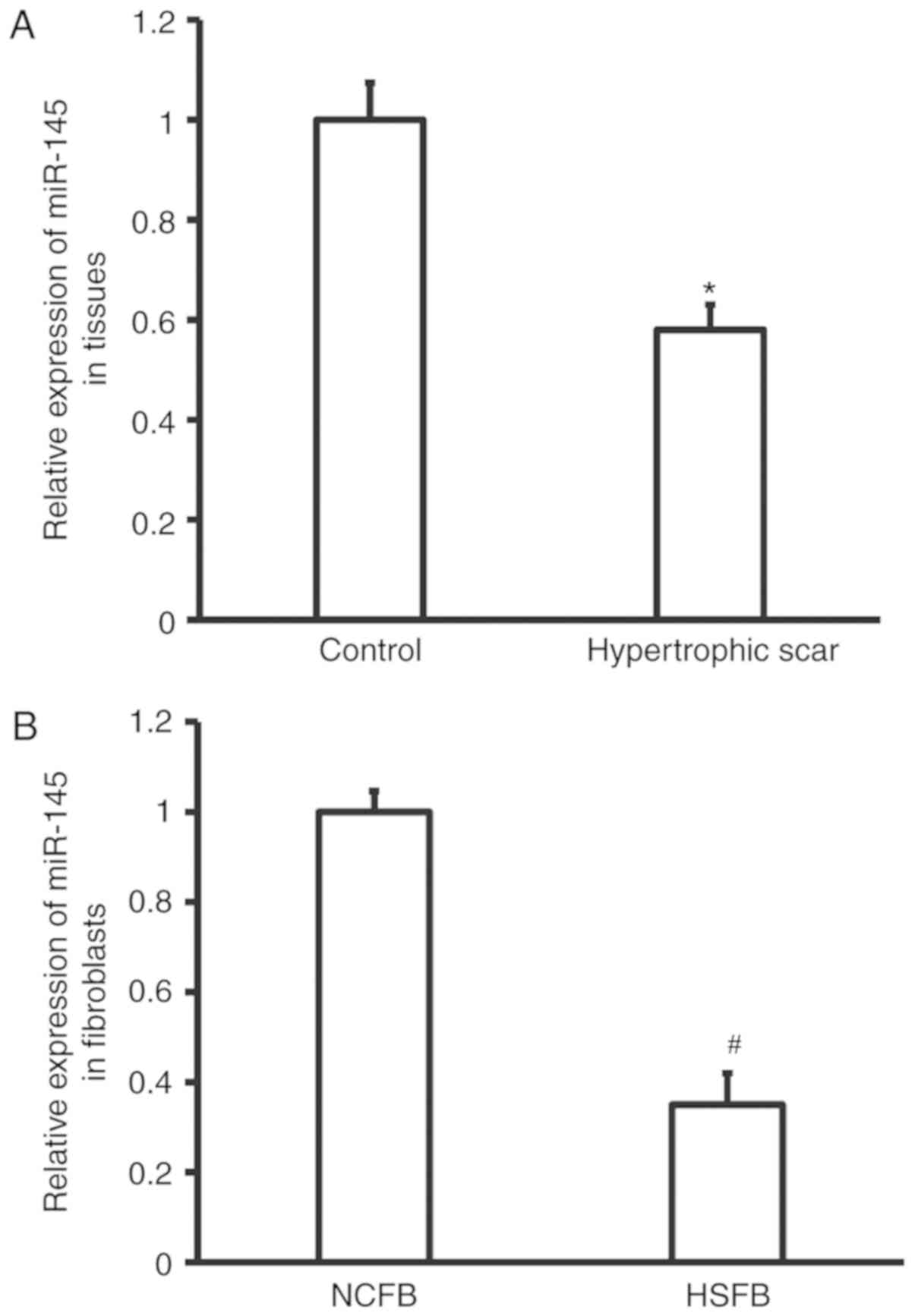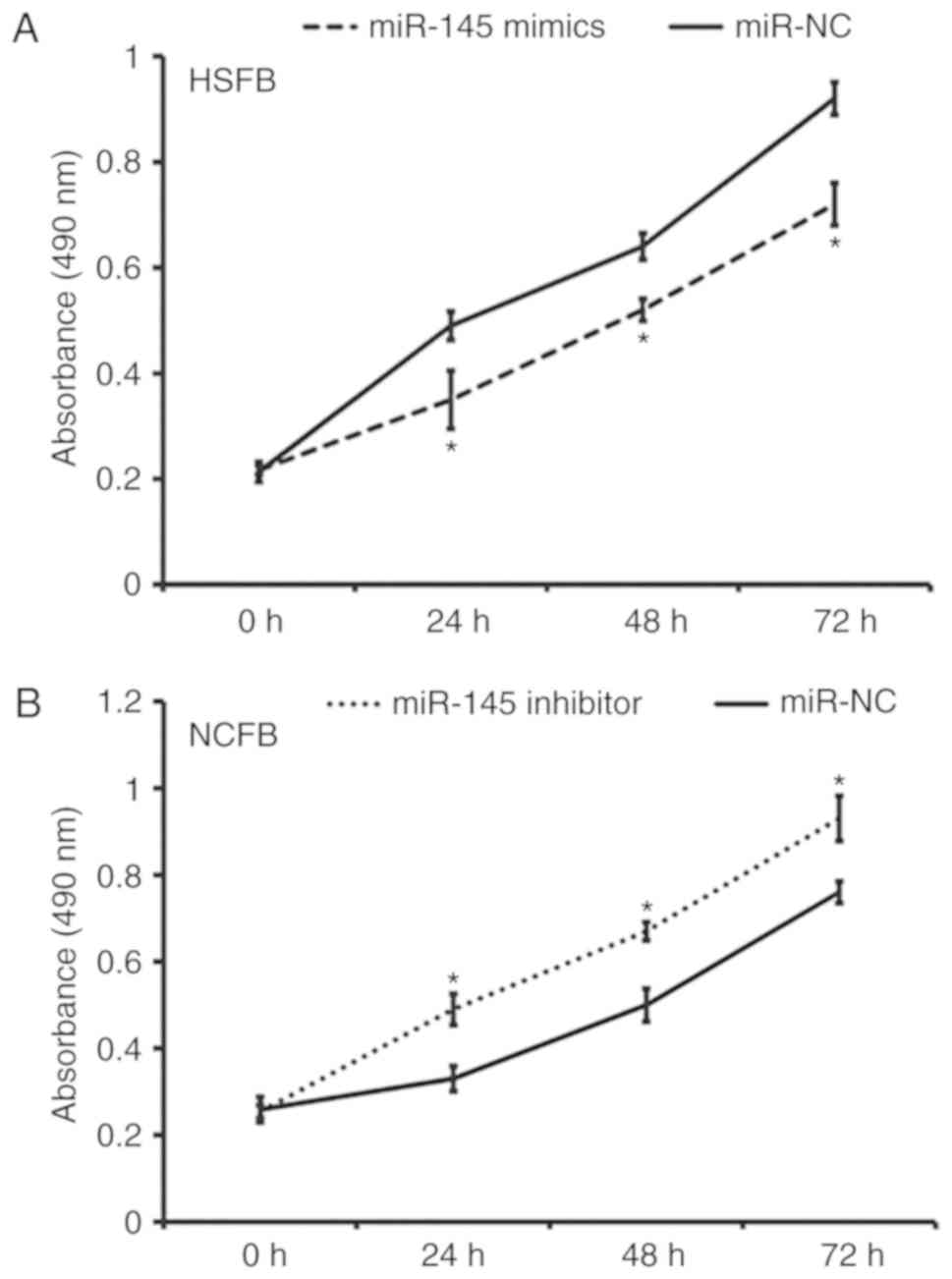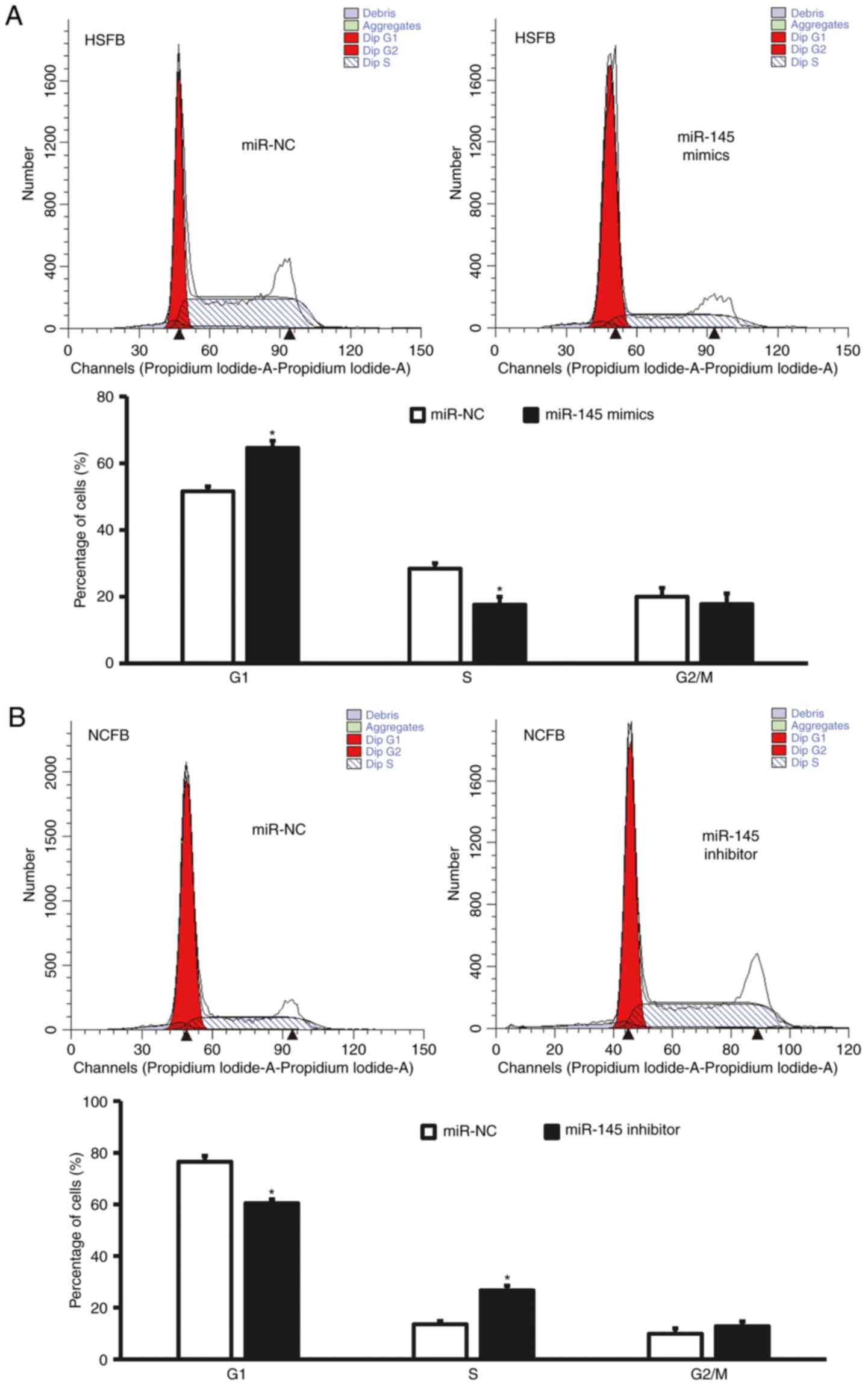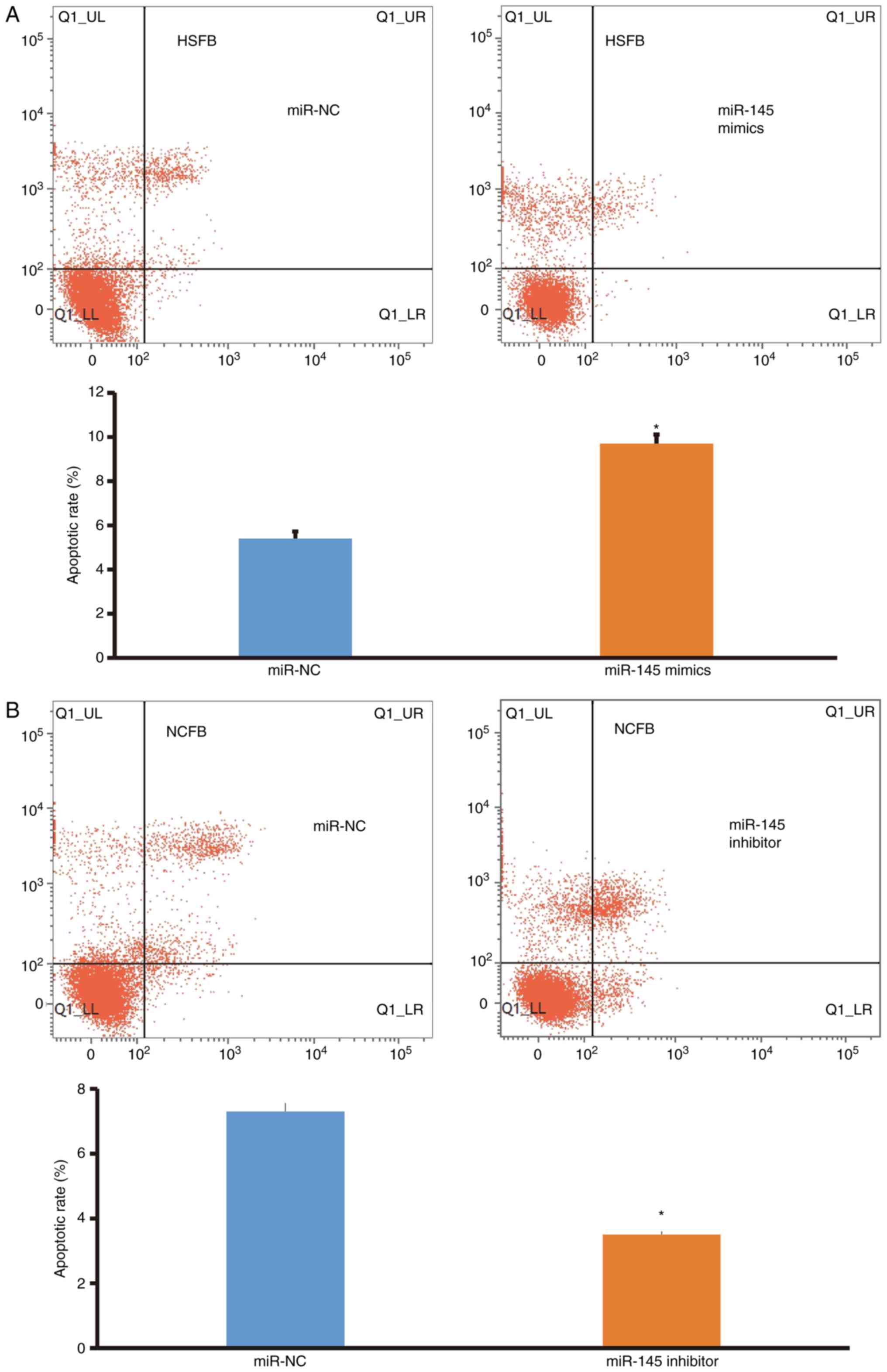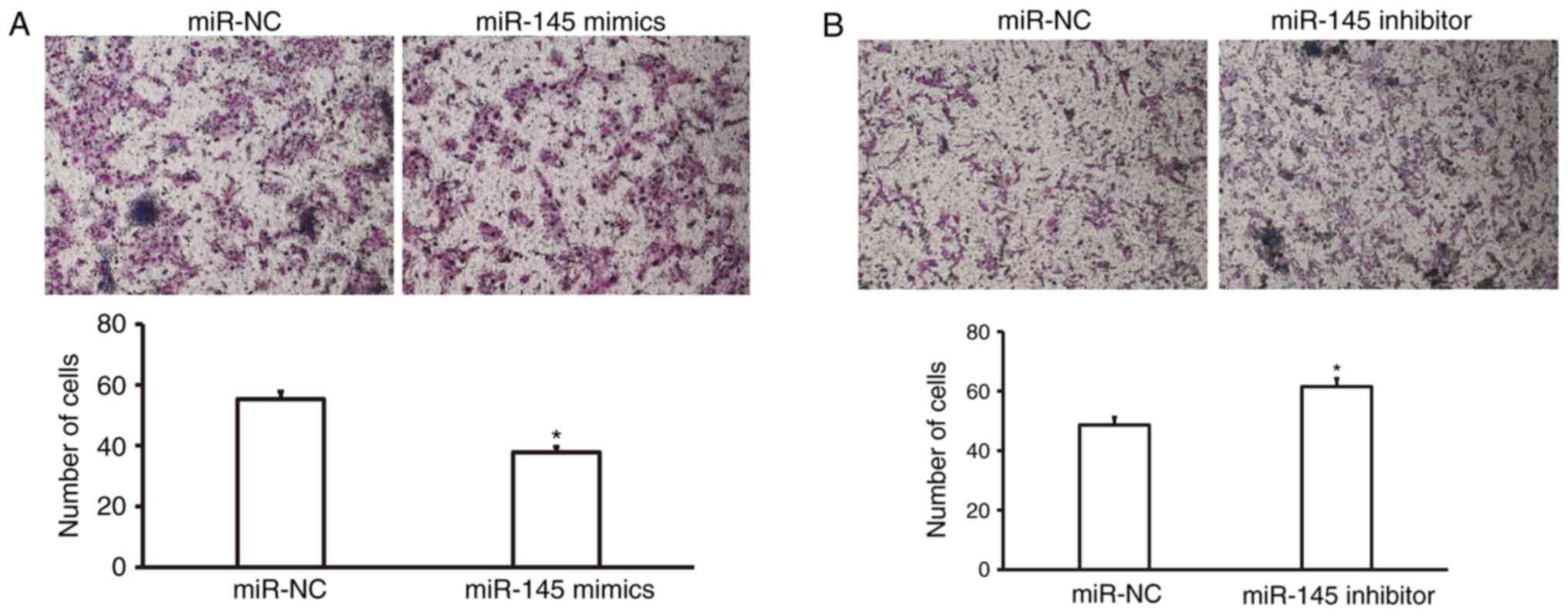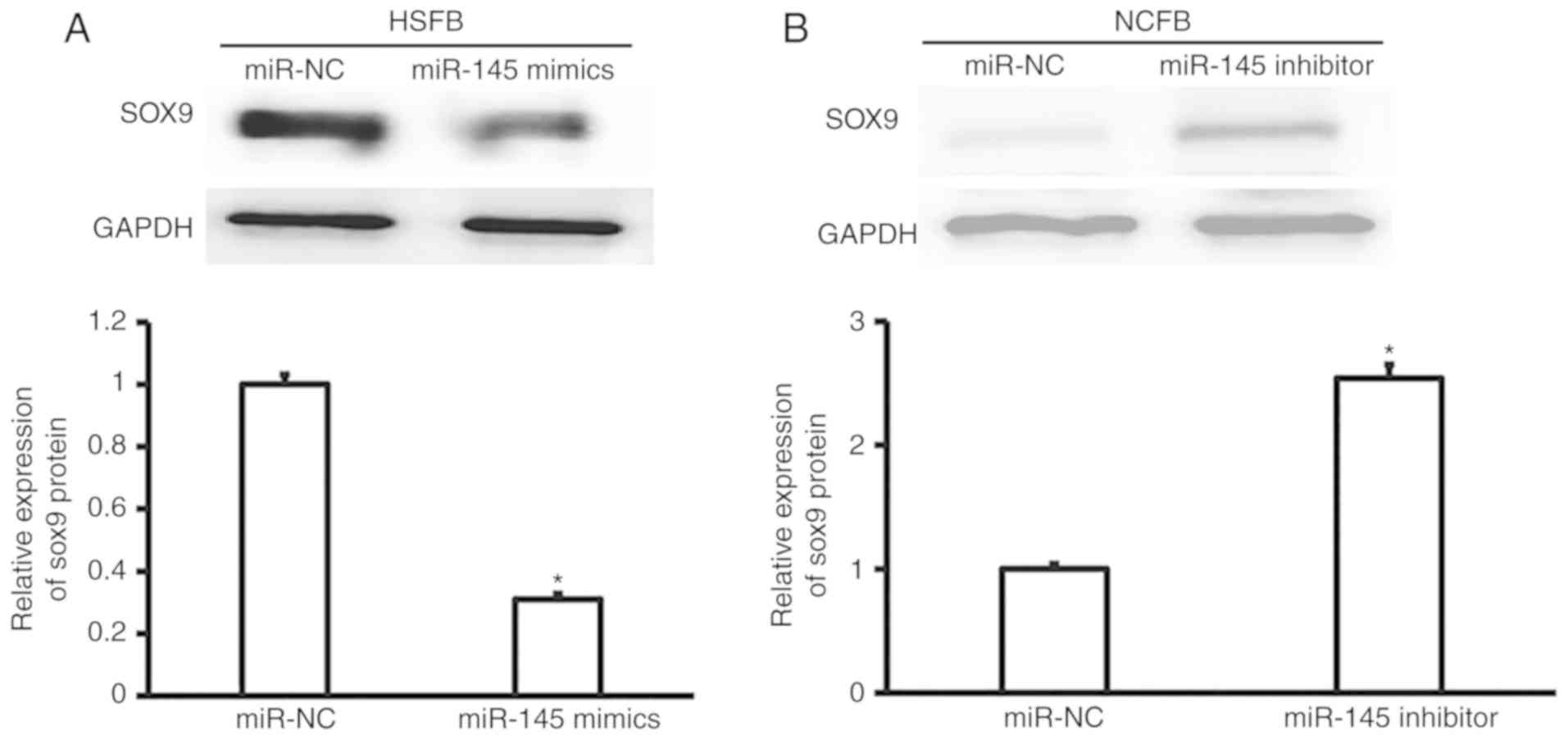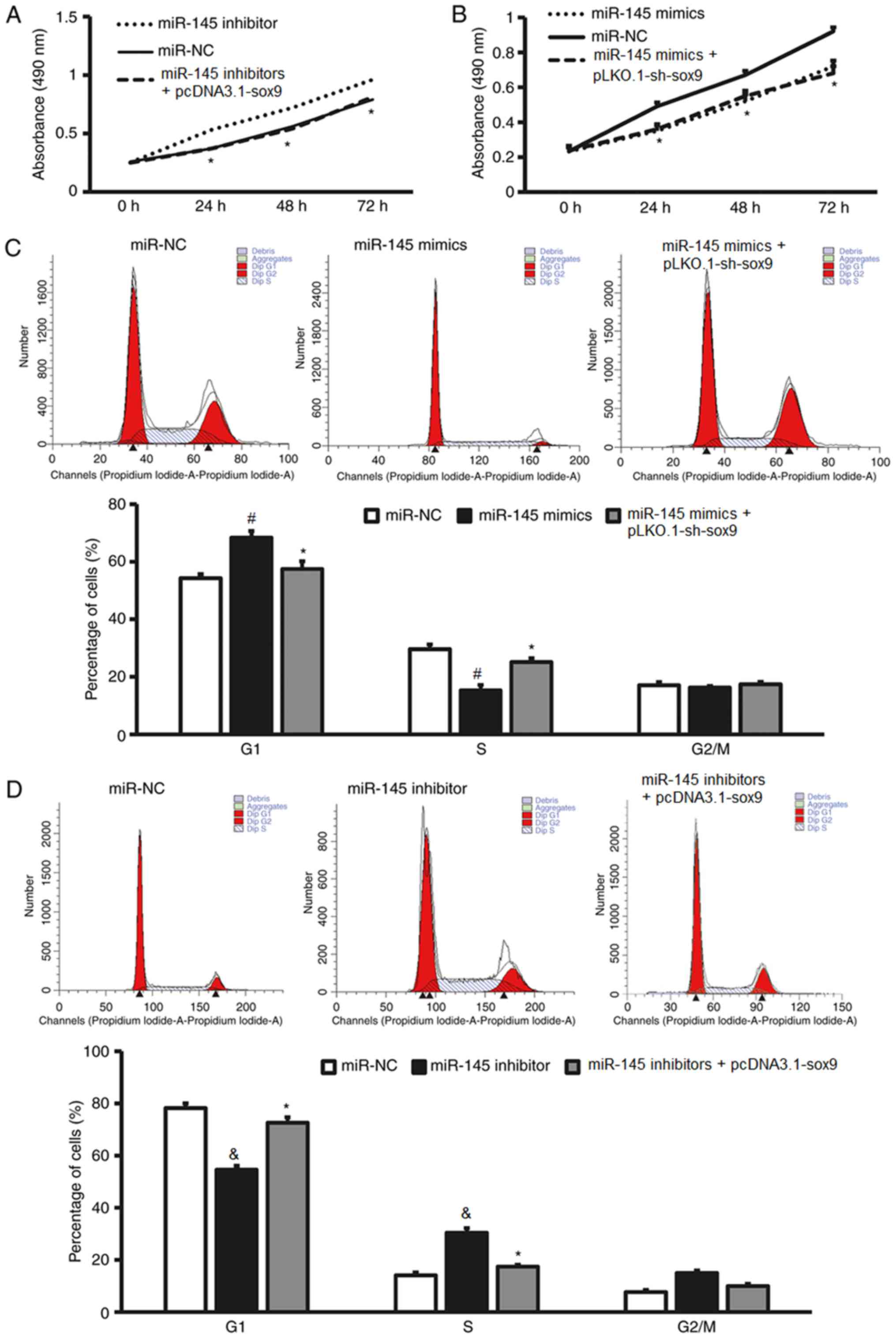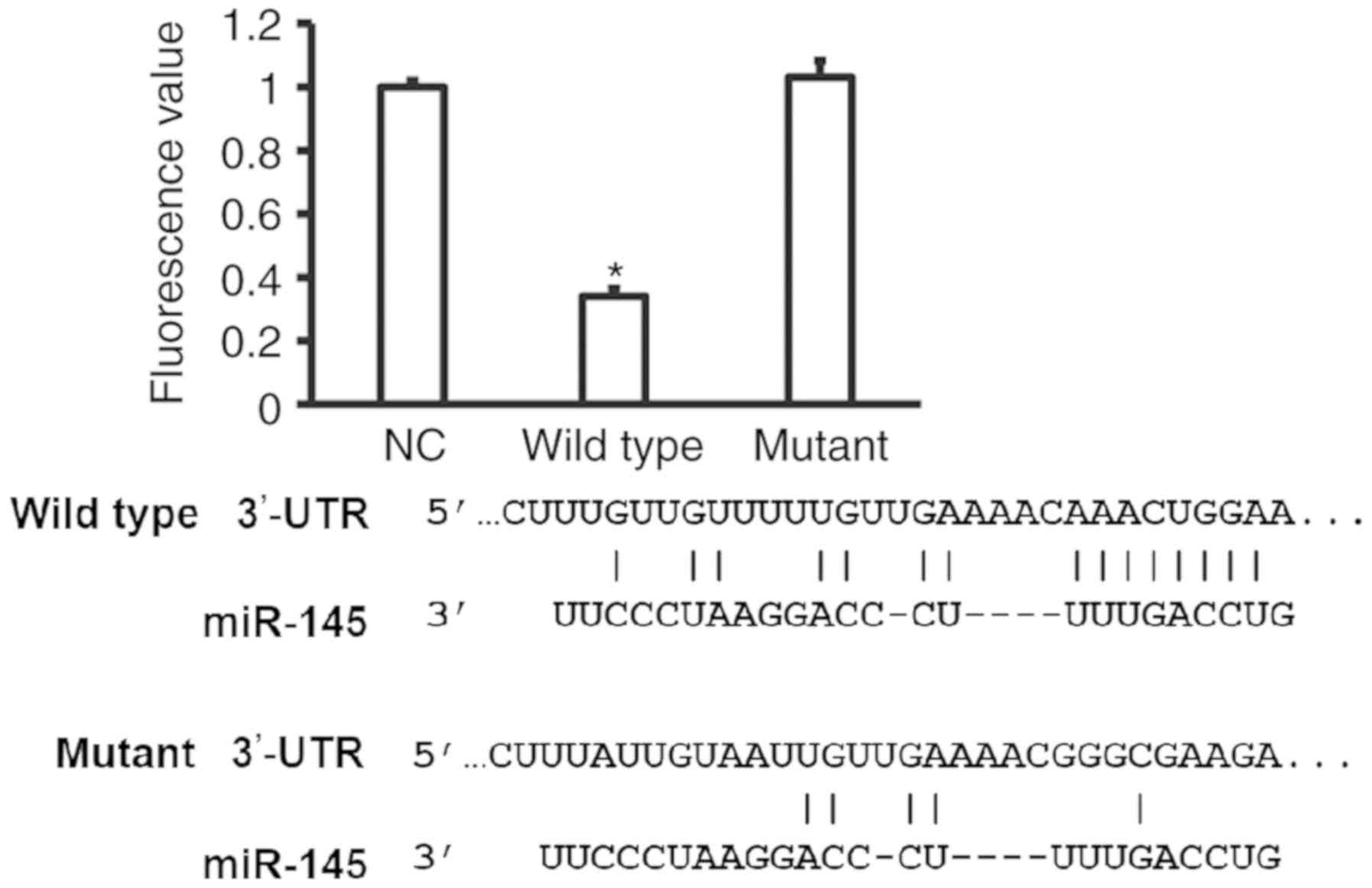|
1
|
Füller J and Müller-Goymann CC:
Anti-proliferative and anti-migratory effects of hyperforin in 2D
and 3D artificial constructs of human dermal fibroblasts-A new
option for hypertrophic scar treatment? Eur J Pharm Biopharm.
126:108–114. 2018. View Article : Google Scholar : PubMed/NCBI
|
|
2
|
Liu DQ, Li XJ and Wenj XJ: Effect of BTXA
on inhibiting hypertrophic scar formation in a rabbit ear model.
Aesthetic Plast Surg. 41:721–728. 2017. View Article : Google Scholar : PubMed/NCBI
|
|
3
|
Guo L, Xu K, Yan H, Feng H, Wang T, Chai L
and Xu G: MicroRNA expression signature and the therapeutic effect
of the microRNA21 antagomir in hypertrophic scarring. Mol Med Rep.
15:1211–1221. 2017. View Article : Google Scholar : PubMed/NCBI
|
|
4
|
Ai JW, Liu JT, Pei SD, Liu Y, Li DS, Lin
HM and Pei B: The effectiveness of pressure therapy (15–25 mmHg)
for hypertrophic burn scars: A systematic review and meta-analysis.
Sci Rep. 7:401852017. View Article : Google Scholar : PubMed/NCBI
|
|
5
|
Chen YY, Lu YH, Ma CH, Tao WW, Zhu JJ and
Zhang X: A novel elastic liposome for skin delivery of papain and
its application on hypertrophic scar. Biomed Pharmacother.
87:82–91. 2017. View Article : Google Scholar : PubMed/NCBI
|
|
6
|
Carney BC, Liu Z, Alkhalil A, Travis TE,
Ramella-Roman J, Moffatt LT and Shupp JW: Elastin is differentially
regulated by pressure therapy in a porcine model of hypertrophic
scar. J Burn Care Res. 38:28–35. 2017. View Article : Google Scholar : PubMed/NCBI
|
|
7
|
Li H, Yang L, Zhang Y and Gao Z:
Kaempferol inhibits fibroblast collagen synthesis, proliferation
and activation in hypertrophic scar via targeting TGF-β receptor
type I. Biomed Pharmacother. 83:967–974. 2016. View Article : Google Scholar : PubMed/NCBI
|
|
8
|
Dong JY, Song F, Liu YK and Wang XQ:
Effects of severe hypoxia and low concentration of serum protein on
the function of human hypertrophic scar fibroblasts. Zhonghua Shao
Shang Za Zhi. 32:594–598. 2016.(In Chinese). PubMed/NCBI
|
|
9
|
Liu J, Xiao X, Shen Y, Chen L, Xu C, Zhao
H, Wu Y, Zhang Q, Zhong J, Tang Z, et al: MicroRNA-32 promotes
calcification in vascular smooth muscle cells: Implications as a
novel marker for coronary artery calcification. PLoS One.
12:e01741382017. View Article : Google Scholar : PubMed/NCBI
|
|
10
|
Zheng Y, Wang Z and Zhou Z: miRNAs: Novel
regulators of autoimmunity-mediated pancreatic β-cell destruction
in type 1 diabetes. Cell Mol Immunol. 14:488–496. 2017. View Article : Google Scholar : PubMed/NCBI
|
|
11
|
Herter EK and Xu Landén N: Non-coding
RNAs: New players in skin wound healing. Adv Wound Care (New
Rochelle). 6:93–107. 2017. View Article : Google Scholar : PubMed/NCBI
|
|
12
|
Mu S, Kang B, Zeng W, Sun Y and Yang F:
MicroRNA-143-3p inhibits hyperplastic scar formation by targeting
connective tissue growth factor CTGF/CCN2 via the Akt/mTOR pathway.
Mol Cell Biochem. 416:99–108. 2016. View Article : Google Scholar : PubMed/NCBI
|
|
13
|
Kim H, Banerjee N, Sirven MA, Minamoto Y,
Markel ME, Suchodolski JS, Talcott ST and Mertens-Talcott SU:
Pomegranate polyphenolics reduce inflammation and ulceration in
intestinal colitis-involvement of the miR-145/p70S6K1/HIF1a axis in
vivo and in vitro. J Nutr Biochem. 43:107–115. 2017. View Article : Google Scholar : PubMed/NCBI
|
|
14
|
Yuan M, Zhang L, You F, Zhou J, Ma Y, Yang
F and Tao L: MiR-145-5p regulates hypoxia-induced inflammatory
response and apoptosis in cardiomyocytes by targeting CD40. Mol
Cell Biochem. 431:123–131. 2017. View Article : Google Scholar : PubMed/NCBI
|
|
15
|
Faccini J, Ruidavets JB, Cordelier P,
Martins F, Maoret JJ, Bongard V, Ferrières J, Roncalli J, Elbaz M
and Vindis C: Circulating miR-155, miR-145 and let-7c as diagnostic
biomarkers of the coronary artery disease. Sci Rep. 7:429162017.
View Article : Google Scholar : PubMed/NCBI
|
|
16
|
Mo D, Yang D, Xiao X, Sun R, Huang L and
Xu J: MiRNA-145 suppresses lung adenocarcinoma cell invasion and
migration by targeting N-cadherin. Biotechnol Lett. 39:701–710.
2017. View Article : Google Scholar : PubMed/NCBI
|
|
17
|
Zhu HY, Li C, Zheng Z, Zhou Q, Guan H, Su
LL, Han JT, Zhu XX, Wang SY, Li J and Hu DH: Peroxisome
proliferator-activated receptor-γ (PPAR-γ) agonist inhibits
collagen synthesis in human hypertrophic scar fibroblasts by
targeting Smad3 via miR-145. Biochem Biophys Res Commun. 459:49–53.
2015. View Article : Google Scholar : PubMed/NCBI
|
|
18
|
Ahmad J, Baig MA, Ali AA, Al-Huqail A,
Ibrahim MM and Qureshi MI: Comparative assessment of four RNA
extraction methods and modification to obtain high-quality RNA from
Parthenium hysterophorus leaf. 3 Biotech. 7:3732017. View Article : Google Scholar : PubMed/NCBI
|
|
19
|
Livak KJ and Schmittgen TD: Analysis of
relative gene expression data using real-time quantitative PCR and
the 2(-Delta Delta C(T)) method. Methods. 25:402–408. 2001.
View Article : Google Scholar : PubMed/NCBI
|
|
20
|
Wu J, Zhang D, Li J, Deng X, Liang G, Long
Y, He X, Dai T and Ren D: MACC1 induces autophagy to regulate
proliferation, apoptosis, migration and invasion of squamous cell
carcinoma. Oncol Rep. 38:2369–2377. 2017. View Article : Google Scholar : PubMed/NCBI
|
|
21
|
Seo GY, Lim Y, Koh D, Huh JS, Hyun C, Kim
YM and Cho M: TMF and glycitin act synergistically on keratinocytes
and fibroblasts to promote wound healing and anti-scarring
activity. Exp Mol Med. 49:e3022017. View Article : Google Scholar : PubMed/NCBI
|
|
22
|
Zhang Z, Kuang F, Liu CL, Chen B, Tang WB
and Li XJ: Effects of silencing Smad ubiquitination regulatory
factor 2 on the function of human hypertrophic scar-derived
fibroblasts. Zhonghua Shao Shang Za Zhi. 33:145–151. 2017.(In
Chinese). PubMed/NCBI
|
|
23
|
Shen C, Jiang L, Shao H, You C, Zhang G,
Ding S, Bian T, Han C and Meng Q: Targeted killing of
myofibroblasts by biosurfactant di-rhamnolipid suggests a therapy
against scar formation. Sci Rep. 6:375532016. View Article : Google Scholar : PubMed/NCBI
|
|
24
|
Pfaff N, Liebhaber S, Möbus S, Beh-Pajooh
A, Fiedler J, Pfanne A, Schambach A, Thum T, Cantz T and Moritz T:
Inhibition of miRNA-212/132 improves the reprogramming of
fibroblasts into induced pluripotent stem cells by de-repressing
important epigenetic remodelling factors. Stem Cell Res. 20:70–75.
2017. View Article : Google Scholar : PubMed/NCBI
|
|
25
|
Do DN, Li R, Dudemaine PL and
Ibeagha-Awemu EM: MicroRNA roles in signalling during lactation: An
insight from differential expression, time course and pathway
analyses of deep sequence data. Sci Rep. 7:446052017. View Article : Google Scholar : PubMed/NCBI
|
|
26
|
Xie HF, Liu YZ, Du R, Wang B, Chen MT,
Zhang YY, Deng ZL and Li J: miR-377 induces senescence in human
skin fibroblasts by targeting DNA methyltransferase 1. Cell Death
Dis. 8:e26632017. View Article : Google Scholar : PubMed/NCBI
|
|
27
|
Zeng X, Huang C, Senavirathna L, Wang P
and Liu L: miR-27b inhibits fibroblast activation via targeting
TGFβ signaling pathway. BMC Cell Biol. 18:92017. View Article : Google Scholar : PubMed/NCBI
|
|
28
|
Li Z, Cai J and Cao X: MiR-19 suppresses
fibroblast-like synoviocytes cytokine release by targeting toll
like receptor 2 in rheumatoid arthritis. Am J Transl Res.
8:5512–5518. 2016.PubMed/NCBI
|
|
29
|
Wang T, O'Brien EC, Rogers JG, Jacoby DL,
Chen ME, Testani JM, Bowles DE, Milano CA, Felker GM, Patel CB, et
al: Plasma levels of MicroRNA-155 Are Upregulated with long-term
left ventricular assist device support. ASAIO J. 63:536–541. 2017.
View Article : Google Scholar : PubMed/NCBI
|
|
30
|
Ohnesorg T, van den Bergen JA, Belluoccio
D, Shankara-Narayana N, Kean AM, Vasilaras A, Ewans L, Ayers KL and
Sinclair AH: A duplication in a patient with 46,XX ovo-testicular
disorder of sex development refines the SOX9 testis-specific
regulatory region to 24 kb. Clin Genet. 92:347–349. 2017.
View Article : Google Scholar : PubMed/NCBI
|
|
31
|
Huang CZ, Xu JH, Zhong W, Xia ZS, Wang SY,
Cheng D, Li JY, Wu TF, Chen QK and Yu T: Sox9 transcriptionally
regulates Wnt signaling in intestinal epithelial stem cells in
hypomethylated crypts in the diabetic state. Stem Cell Res Ther.
8:602017. View Article : Google Scholar : PubMed/NCBI
|
|
32
|
Bremmer F, Behnes CL, Schildhaus HU, Gaisa
NT, Reis H, Jarry H, Radzun HJ, Stroebel P and Schweyer S: The role
of beta-catenin mutation and SOX9 expression in sex cord-stromal
tumours of the testis. Virchows Arch. 470:421–428. 2017. View Article : Google Scholar : PubMed/NCBI
|
|
33
|
Liu X, Wang H, Zhu Z, Ye Y, Mao H and
Zhang S: MicroRNA-105 targets SOX9 and inhibits human glioma cell
progression. FEBS Lett. 590:4329–4342. 2016. View Article : Google Scholar : PubMed/NCBI
|
|
34
|
Li Z, Li B, Niu L and Ge L: miR-592
functions as a tumor suppressor in human non-small cell lung cancer
by targeting SOX9. Oncol Rep. 37:297–304. 2017. View Article : Google Scholar : PubMed/NCBI
|
|
35
|
Wang X, Liu Y, Liu X, Yang J, Teng G,
Zhang L and Zhou C: MiR-124 inhibits cell proliferation, migration
and invasion by directly targeting SOX9 in lung adenocarcinoma.
Oncol Rep. 35:3115–3121. 2016. View Article : Google Scholar : PubMed/NCBI
|
|
36
|
Chang T, Xie J, Li H, Li D, Liu P and Hu
Y: MicroRNA-30a promotes extracellular matrix degradation in
articular cartilage via downregulation of Sox9. Cell Prolif.
49:207–218. 2016. View Article : Google Scholar : PubMed/NCBI
|
|
37
|
Li J, Wang L, Liu Z, Zu C, Xing F, Yang P,
Yang Y, Dang X and Wang K: MicroRNA-494 inhibits cell proliferation
and invasion of chondrosarcoma cells in vivo and in vitro by
directly targeting SOX9. Oncotarget. 6:26216–26229. 2015.PubMed/NCBI
|















